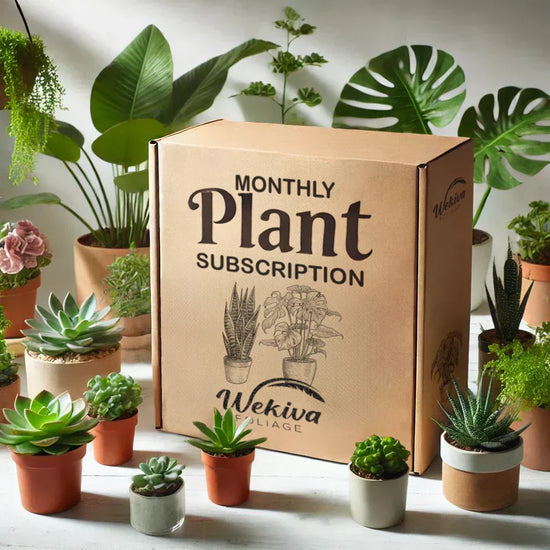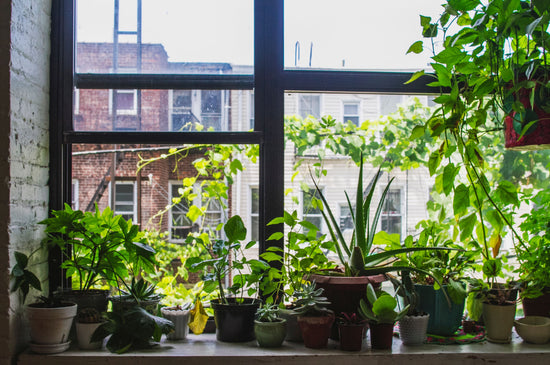How to Keep Your Plants Alive in Winter
Winter can be a challenging time for houseplants. Shorter days, lower light levels, and dry indoor air can stress even the hardiest plants. However, with a few adjustments to your care routine, you can help your plants survive and thrive through the colder months. Here’s a comprehensive guide to keeping your plants alive in winter.
1. Adjust Watering Frequency
Plants grow more slowly in winter due to reduced light and cooler temperatures, which means they need less water. Overwatering during this time is a common mistake that can lead to root rot.
- Check Soil Moisture: Always let the top inch of soil dry out before watering. For succulents like the Fairy Castle Cactus, allow the soil to dry completely.
- Use Room-Temperature Water: Cold water can shock the roots. Let water sit for a few hours to reach room temperature before using it.
2. Increase Humidity
Indoor air tends to be much drier in winter due to heating systems, which can stress tropical plants.
- Use a Humidifier: Place a humidifier near plants like the Peace Lily that thrive in higher humidity.
- Pebble Trays: Fill a tray with pebbles and water, then place the pot on top (without submerging it). As the water evaporates, it adds humidity around the plant.
- Group Plants Together: Plants release moisture through transpiration, creating a more humid microenvironment when clustered.
3. Provide Adequate Light
Winter’s shorter days and reduced sunlight can limit the light your plants receive.
- Move Plants Closer to Windows: Place light-loving plants like the Lifesaver Cactus near bright, south-facing windows.
- Clean Windows: Dust and grime on windows can block light. Clean them regularly to maximize sunlight.
- Use Grow Lights: For plants in darker areas, invest in grow lights to supplement natural light.
4. Maintain Stable Temperatures
Temperature fluctuations can stress plants. Avoid exposing them to drafts or extreme heat from radiators.
- Keep Away from Drafts: Move plants like the Heart Fern away from doors and windows that let in cold air.
- Monitor Room Temperature: Most houseplants prefer temperatures between 65–75°F.
5. Reduce Fertilizing
Most plants enter a dormant phase in winter and don’t require regular feeding.
- Pause Fertilizing: Hold off on fertilizer for plants like the Multi-Colored Bromeliad Planter until spring when they resume active growth.
- Exception for Winter Growers: Some plants, such as certain ferns, may benefit from light feeding if they show new growth.
6. Prune Wisely
Pruning helps remove dead or damaged foliage and encourages healthy growth.
- Trim Yellowing Leaves: Remove any yellowing or browning leaves from plants like the English Ivy Trio to prevent pests and diseases.
7. Dust Leaves
Dust buildup can block light and reduce photosynthesis.
- Wipe Down Leaves: Gently clean leaves with a damp cloth to keep them dust-free and ensure they absorb as much light as possible.
8. Repot Only If Necessary
Avoid repotting plants in winter unless absolutely necessary, as they’re not actively growing and may struggle to adjust.
9. Inspect for Pests
Dry indoor conditions can encourage pests like spider mites and mealybugs.
- Inspect Regularly: Check leaves and stems for signs of pests.
- Treat Immediately: Use neem oil or insecticidal soap to manage infestations before they spread.
FAQs About Winter Plant Care
Q: How often should I water my plants in winter?
A: Water less frequently, allowing the top inch of soil to dry out before watering again.
Q: Can I move my plants closer to heaters to keep them warm?
A: No. Heaters can dry out the air and scorch plants. Keep them in stable, room-temperature conditions.
Q: Do all plants go dormant in winter?
A: No. Some plants, like ferns and certain succulents, may continue to grow, though at a slower pace.
Q: Should I fertilize my plants during winter?
A: It’s best to pause fertilizing until spring unless the plant shows active growth.
With these tips, you can help your plants survive and thrive during winter’s challenges. By adjusting your care routine to meet the season’s demands, your greenery will emerge healthy and ready to flourish when spring arrives.





